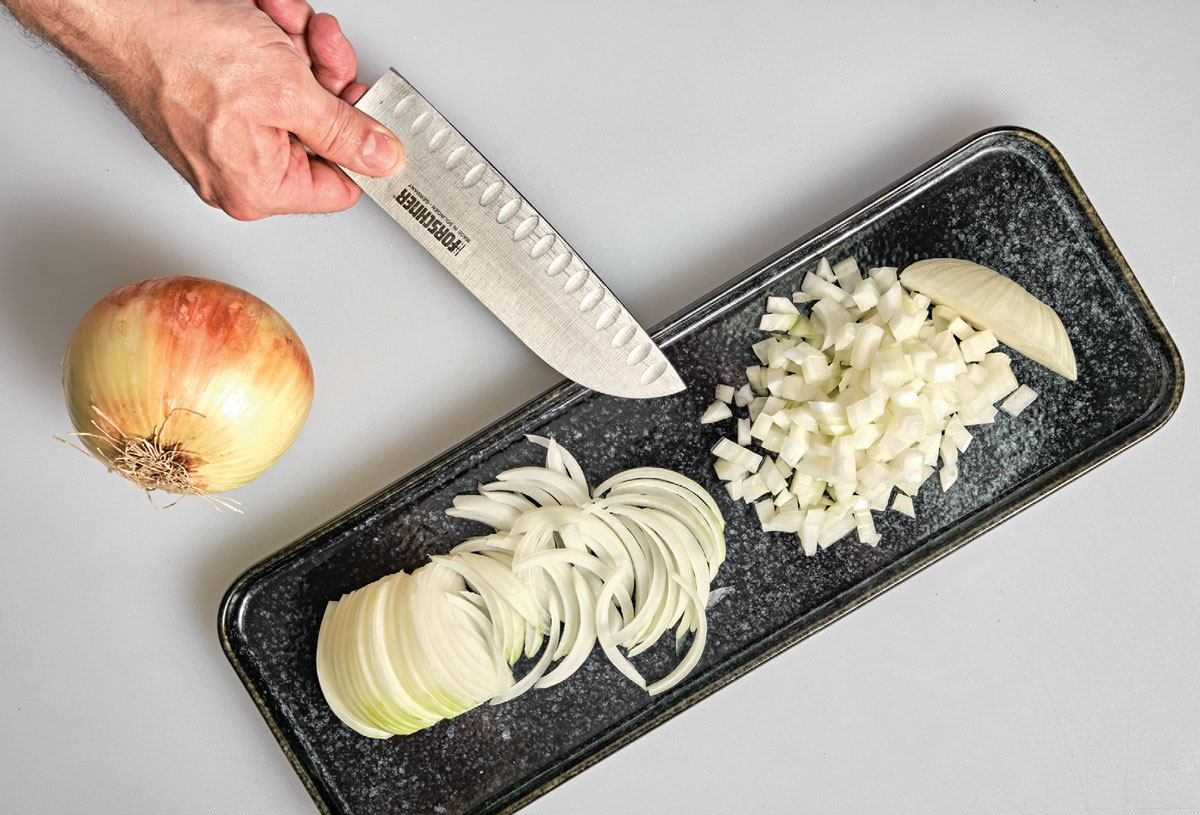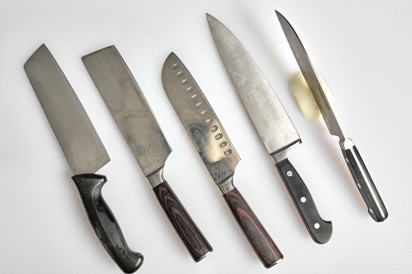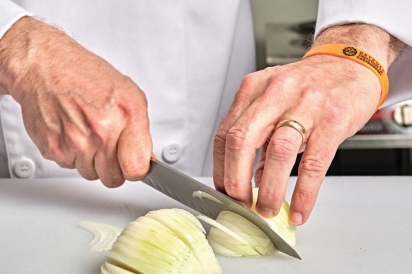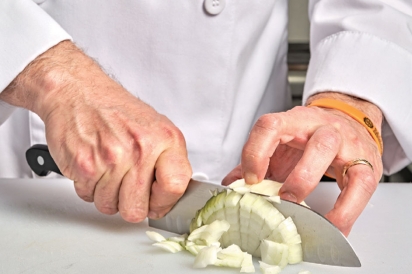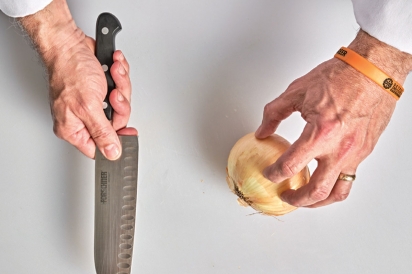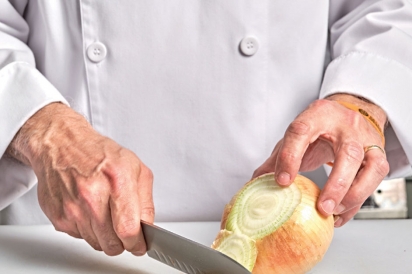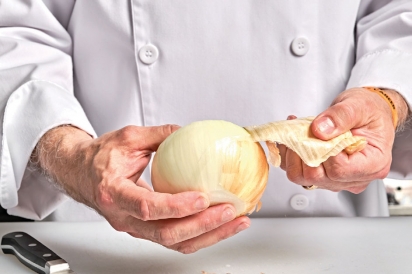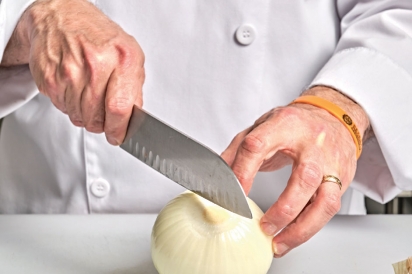Sharp! Coming Through!
ANY PROFESSIONAL COOK or chef will tell you that one key to exceptional outcomes is using a quality knife. When speaking with a culinary professional about what type of knife to purchase, you will find as many different answers as there are cuisines. Every cook and chef has their preference but there are a few key factors to keep in mind when selecting a quality knife for your own kitchen performance.
First, consider the knife’s material. Forged steel is preferred by many professionals. It holds a sharp edge longer than pressed steel, is more durable and is easier to clean. Although the quality of pressed steel has improved in recent years and these knives are usually inexpensive, their thin blades require more frequent sharpening, making forged steel more popular and well worth the investment.
Another consideration is the feel. Find a store where you can pick them up, hold them and feel their weight, and also to determine whether you prefer a handle made of wood, plastic, metal or some other material. The variety of handles on the market today is extensive and one can only choose properly by holding the actual knife. The feel of a knife is extremely important. (That said, I purchased a knife from Portugal with a cork handle that I absolutely love.) If the knife has a thin blade, it may be lighter in the hand. Some chefs like thin, light knives while others prefer a heavier, more substantial-feeling blade.
“The feel of a knife is extremely important.”
No single knife is perfect for every person. It is all up to the cook. Invest in a quality knife and you will not be disappointed. A good chef ’s knife can last a lifetime.
THE INFLUENCE ON DESIGN AND STEEL
Chef knives today generally break down into three styles of steel and design:
European—Based on German designs, this is the traditional chef knife with a thick heel (the back of the knife closest to the handle). Its folded steel holds an edge.
Japanese—These lighter knives are often thinner, with a thinner heel than the classical European design. The steel is often folded more than European and often artistic designs are embedded into the steel. The rise of Japanese knife-making over recent decades draws on the traditions of samurai swords.
Artisan—Many small artisan producers are designing and making great kitchen knives. Often these are thicker and heavier than mass-produced knives.
Basic knife skill techniques
Always make sure to use a cutting board. (Cutting board options could fill a completely different article, but we usually use industry-approved plastic for durability and ease of maintenance.) Consider placing a piece of washable shelf liner or a damp paper towel under the board to prevent it from slipping.
For this article, we will focus on ways to cut an onion, and how to use the layers of the onion to your advantage.
1. Grip the knife firmly and practice the proper knife-holding position, where the knife becomes an extension of your arm and hand. 1
2. Examine the onion to determine the root side and the stem side. Slice off the root side, being careful to not cut all the way through. 2
3. Peel back the skin and outer layer of the onion. If you are comfortable, use the knife to peel the layers. 3
4. Once the outer layers are completely removed, clean the area. Some chefs like to reserve the outer layers for stocks and broths. If you choose to, wash the onion prior to peeling.
5. Remember the root and stem identification? Cut the onion in half from the root to the stem. 4
6. Remove the core from the root side using an angled cut or by keeping the point of the knife on the board and rotating it around to remove the core.
7. Now you are ready to perform the knife cut.
a. Julienne—Thinly slice the onion into slices about ⅛ inch thick, with the outer grain of the onion and across the inner layers. 5
b. Dice—Slice the onion parallel with the outer grain, careful not to cut all the way through, leaving the pieces intact. Rotate the onion and slice between the layers two to three times, depending on the size. Rotate the onion again and cut across the original cuts. 6
“One “key to exceptional outcomes is using a quality knife.”
Developing good knife skills takes practice. But it’s well worth it, because possessing such skills elevates the cuisine you are preparing visually and—more importantly—it greatly enhances flavor and consistency. If the food you cook differs in size, it will cook at different rates, allowing for inconsistency in doneness, caramelization, flavor absorption and so on.
Perfection is a journey, not a destination, as the old adage goes. For me, every time I cut a vegetable I aim for the perfect cut. The consistency, accuracy and overall end result brings joy in its simplicity. Finding these moments of joy is one of the many pleasures that keeps me cooking.


